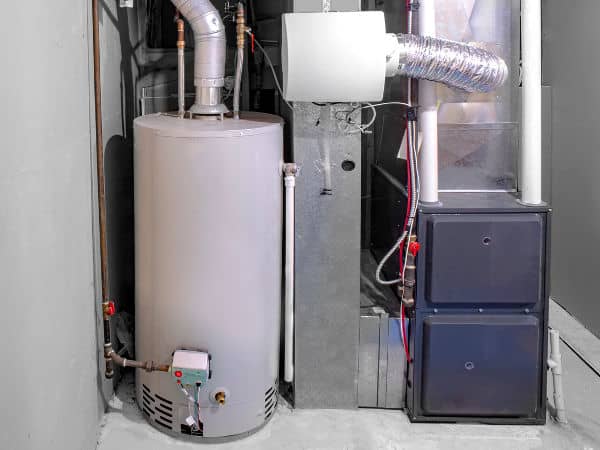Expert Advice on Maintaining Your Home's Hot Water SystemHow to Properly Care for Your Home's Hot Water System
Expert Advice on Maintaining Your Home's Hot Water SystemHow to Properly Care for Your Home's Hot Water System
Blog Article
Were you in search of resources about What Kind of Maintenance Do Water Heaters Need??

Hot water is crucial for everyday convenience, whether it's for a rejuvenating shower or cleaning dishes. To guarantee your warm water system runs efficiently and lasts much longer, regular maintenance is vital. This short article gives sensible pointers and insights on exactly how to maintain your home's hot water system to stay clear of disruptions and expensive repairs.
Introduction
Keeping your home's hot water system may appear challenging, however with a couple of simple steps, you can guarantee it operates efficiently for many years to find. This overview covers everything from comprehending your warm water system to DIY maintenance ideas and recognizing when to hire expert aid.
Importance of Maintaining Your Warm Water System
Normal upkeep not only prolongs the lifespan of your warm water system but likewise guarantees it runs efficiently. Overlooking maintenance can cause lowered efficiency, higher energy costs, and even early failure of the system.
Signs Your Hot Water System Requirements Maintenance
Recognizing when your warm water system needs focus can prevent major problems. Keep an eye out for indicators such as irregular water temperature, unusual noises from the heating unit, or rustic water.
Purging the Hot Water Heater
Purging your hot water heater removes sediment accumulation, enhancing performance and lengthening its life.
Monitoring and Changing Anode Rods
Anode poles protect against corrosion inside the tank. Inspecting and changing them when worn out is essential.
Complex Issues Requiring Professional Aid
Examples include significant leaks, electrical issues, or if your water heater is regularly underperforming.
Routine Professional Maintenance Benefits
Professional maintenance can include complete examinations, tune-ups, and ensuring compliance with safety requirements.
Examining and Adjusting Temperature Settings
Changing the temperature level setups makes sure optimum efficiency and safety and security.
Do It Yourself Tips for Upkeep
You can execute numerous upkeep jobs on your own to maintain your warm water system in top condition.
Checking for Leakages
On a regular basis evaluate pipes and links for leakages, as these can bring about water damages and higher bills.
Understanding Your Hot Water System
Prior to diving into maintenance jobs, it's helpful to recognize the fundamental components of your warm water system. Commonly, this includes the hot water heater itself, pipes, anode rods, and temperature level controls.
Regular Monthly Maintenance Tasks
Normal regular monthly checks can help capture minor issues before they rise.
Checking Pressure Alleviation Valves
Evaluating the pressure safety valve ensures it works appropriately and stops excessive stress accumulation.
Insulating Pipelines
Insulating warm water pipes lowers warm loss and can conserve energy.
When to Call an Expert
While DIY upkeep is advantageous, some concerns need specialist proficiency.
Final thought
Regular upkeep of your home's hot water system is vital for efficiency, durability, and cost financial savings. By following these ideas and knowing when to seek specialist help, you can make sure a dependable supply of warm water without unexpected interruptions.
How to Maintain an Instant Hot Water Heater
Before tinkering with your hot water heater, make sure that it’s not powered on. You also have to turn off the main circuit breaker and shut off the main gas line to prevent accidents. Also turn off the water valves connected to your unit to prevent water from flowing into and out of the appliance. 2. When you’re done, you have to detach the purge valves’ caps. These look like the letter “T” and are situated on either side of the water valves. Doing so will release any pressure that has accumulated inside the valves while at the same time avoid hot water from shooting out and burning your skin. 3. When the purge valves’ caps are removed, you have to connect your hosing lines to the valves. Your unit should have come with three hoses but if it didn’t, you can purchase these things from any hardware or home repair shops. You can also get them from retail stores that sell water heating systems. Read the user’s manual and follow it to complete this task properly. When the hosing lines are connected, open the purge port’s valves. 4. You should never use harsh chemical cleaners or solutions when cleaning your unit. Make use of white vinegar instead. It should be undiluted and you’ll probably use about 2 gallons. 5. Now flush your water heater. This task should probably take about 40 minutes. We can’t give you specific directions for this because the procedure is carried out depending on the type, model and brand of your heater. With that being said, refer to the user’s manual. 6. When you’re done draining the unit, you have to turn off the purge port valves again. Remove the hosing lines that you earlier installed on each of the water valves. Put the valve caps (purge port) back in their respective places and be very careful so as not to damage the rubber discs that are found inside these caps. 7. Now that everything’s back in place, check your user’s manual again to find out how to reactivate your water heating system. 8. Once it is working, turn one of your hot water faucets on just to let air pass through the heater’s water supply pipes. Leave the tap on until water flows smoothly out of it. https://www.orrplumbing.com/blog/2014/september/how-to-maintain-an-instant-hot-water-heater/

As a person who reads about How to Maintain a Hot Water Heater in a Few Simple Steps, I was thinking sharing that article was worthwhile. Sharing is good. You just don't know, you may very well be helping someone out. Many thanks for taking the time to read it.
Need Help? Hire Us Now! Report this page